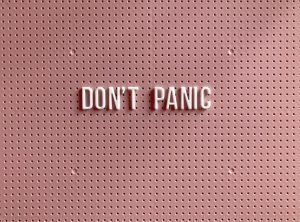 For the past 10 years, I have been working with professionals in career and life transitions. Few things are more likely to trigger anxiety than job loss or business failure.
For the past 10 years, I have been working with professionals in career and life transitions. Few things are more likely to trigger anxiety than job loss or business failure.
And let’s add in the heaping helping of crazy this global pandemic has added to the mix. Needless to say, this hasn’t made things any easier for people.
You may not know that anxiety was skyrocketing in the general population pre-COVID – and in segments of the population that previously had not experienced much of it. The statistics are staggering. From The Washington Post on May 26, 2020: “A third of Americans now show signs of clinical anxiety or depression, Census Bureau finds amid coronavirus pandemic.”
This article has great infographics. I highly recommend checking it out.
I experienced a visceral reaction as it increasingly became apparent to me how this crisis would escalate. I could anticipate the trauma this would add to people who were already struggling. I knew I wanted to help, but I wasn’t sure what I was supposed to do, in addition to my work with my clients and devotion to my labor of love, The Depression Discussions™.
If you don’t know, anxiety and depression are two sides of the same coin, and people usually experience both, with one generally being primary.
I decided people needed a toolkit for working with anxiety, so I have created a 10-day eCourse called I Dial Down Anxiety. I am going to look at the mental, physical, and emotional aspects of anxiety, and share strategies and techniques for managing it, so it doesn’t take over your life.
I believe fighting with anxiety just gives it more power.
If you (or someone you know) is struggling with anxiety, you can check out the promo video below, or the sales page for the course www.idialdown.com. The course launches next week, and each day a video covering a specific topic and additional resources will be in your inbox.
After I showed him the curriculum, my friend said, “Wow, I thought I was doing a lot – but clearly I could be doing more.”
In the eCourse, I present multiple ways to work with anxiety – because one technique might work for someone, but not for you. Or it might not work for you right now. That’s totally fine. One size never did fit all.
What do you think? Is this something you could use?

